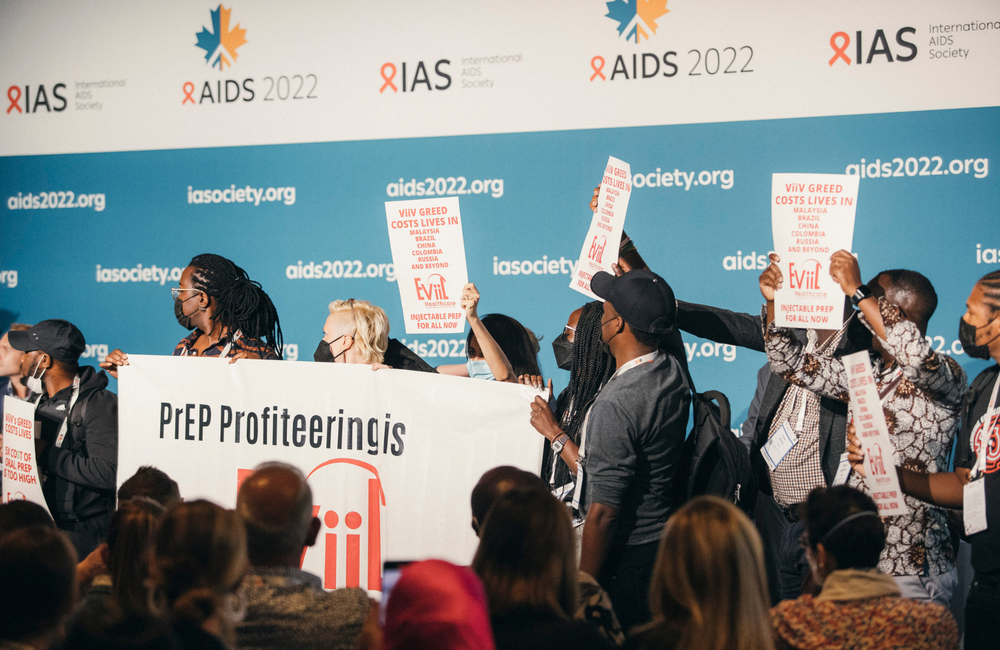
Prices charged for injectable cabotegravir PrEP will need to fall substantially for upper middle-income countries to benefit from its use as an HIV prevention measure, according to an assessment of affordability published in Open Forum Infectious Diseases.
At current prices, injectable PrEP will remain out of reach and will have little impact on global HIV numbers, the study concludes.
Clinical trials in gay and bisexual men and transgender women and in cisgender women show that people receiving injectable cabotegravir were between 70% and 90% less likely to acquire HIV compared to people taking a daily tenofovir/emtricitabine pill.
The World Health Organization recommends injectable cabotegravir PrEP for people at substantial risk of acquiring HIV. Cabotegravir injections are needed every two months.
A cost-effectiveness study of injectable PrEP estimated that if a third of young men and 60% of young women in South Africa received the injectable form of PrEP, 42,000 HIV infections could be avoided by 2028.
But for cabotegravir PrEP to be cost-effective compared to oral PrEP in South Africa, the price per injection needs to fall to $9 - $14 per injection, or a cost of $60 to $119 a year, the study found. The Clinton Health Access Initiative estimates that cabotegravir injectable PrEP could be manufactured for $15 - $20 a year if there was sufficient demand.
“According to the latest CHAI market report, around 2.8 million people received PrEP in LMICs in 2021,” Dr Andrew Hill of Liverpool University told aidsmap. “This is far below the coverage achieved for HIV treatment. Around 50-70 million would need to be given PrEP to maximise the benefits. So, the unit price of drugs like CAB-LA is really important. If this is too high, there would not be the money to give PrEP to everyone.”
Today, cabotegravir costs $22,200 in the United States. In July 2022, manufacturer ViiV Healthcare announced a voluntary license with the Medicines Patent Pool, allowing 90 countries to buy generic versions of cabotegravir for HIV prevention.
The license covers low-income countries, lower-middle income countries and all of Africa (except Libya). It gives access to upper-middle income countries in Africa including Botswana, Gabon, Namibia, Mauritius and South Africa as well as to Seychelles, which is classified as a high-income country.
It shuts out one of the countries where cabotegravir PrEP trials took place, Brazil, raising questions about ViiV Healthcare’s post-trial obligations.
To assess the impact of changing the voluntary license terms to include countries with GDP levels lower than Mauritius ($8812 per capita) or Seychelles ($13,307), the country with the highest GDP in the Africa region, Hill and colleagues identified a total of 38 countries currently excluded from the deal with GDP lower than Seychelles. These countries – including China – have a combined population of 2.4 billion.
The researchers estimated HIV incidence in these countries based on the most recent national data. Excluding China and the Russian Federation, where HIV diagnoses and incidence are poorly documented, the excluded countries account for 122,000 new infections per year, around 8% of global HIV incidence.
Assuming that cabotegravir PrEP reduced HIV incidence by the same extent as observed in the HPTN 083 and 084 studies (from 1.98% in the oral PrEP arm to 0.39%), 7.7 million people in the excluded countries would need to take cabotegravir to prevent these 122,000 infections. In this calculation, 63 people need to receive cabotegravir in order to prevent one infection.
Even at the lowest price quoted by ViiV for manufacturing and supplying cabotegravir ($1440 per year), the excluded countries would need to find over $11 billion a year to provide cabotegravir PrEP to over seven million people.
The current voluntary licensing agreement shuts out middle-income countries with equivalent or higher incidence than African countries that benefit from the deal, the researchers argue. Comparing nations by GDP and HIV incidence, they show that the ten middle-income countries with the highest HIV incidence outside Africa account for almost three times as many HIV infections as the ten highest GDP countries in Africa, excluding South Africa.
However, they question whether GDP per capita is the only measure to use when assessing affordability as it does not take into account health expenditure or inequalities that place some people at higher risk of HIV. They say that lack of access to injectable PrEP will worsen structural inequalities that already lead people in marginalised groups to have worse access to HIV care and poorer rates of viral suppression due to stigma and inadequate health services.
“CAB-LA is a failure of public health at the moment - it is hardly used anywhere,” Dr Hill told aidsmap. “The price of CAB-LA is too high to make it cost-effective as a prevention drug, when TDF/FTC costs only $48 per year in low- and middle-income countries and under £150 per year even in the UK. If countries have fixed budgets for PrEP, using high-cost CAB-LA could use up money which could be spent on treating more people with TDF/FTC. The result could be even more infections.“
Pepperell T, Cross S, Hill A. Cabotegravir – global access to long-acting pre-exposure prophylaxis for HIV. Open Forum Infectious Diseases, published online 15 December 2022 (open access).
